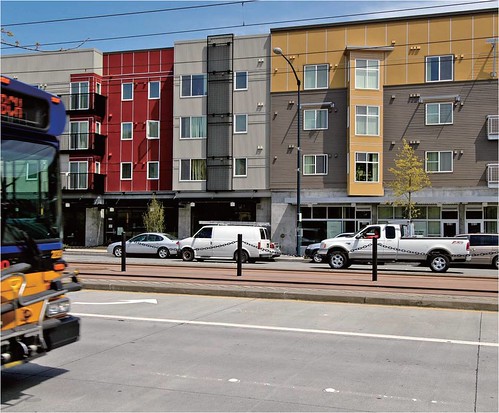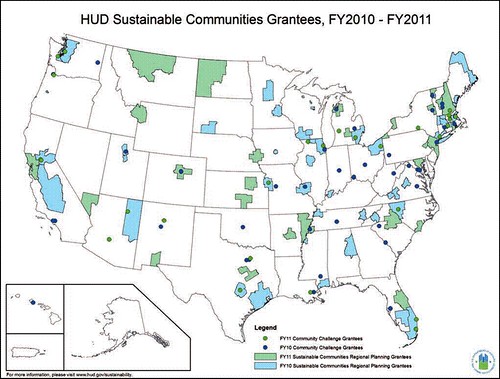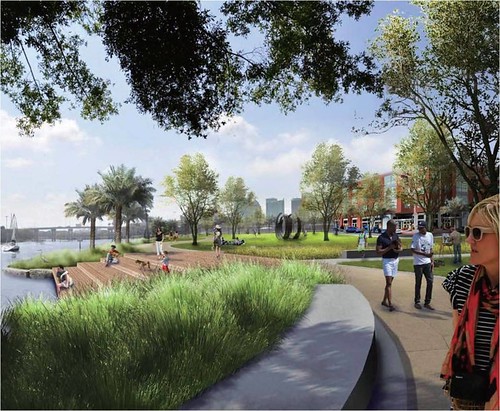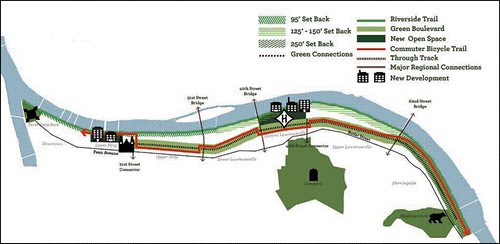HUD builds impressive record of support for smarter community planning

Posted December 5, 2012 at 1:28PM
I have been majorly impressed by the community-building work of the federal Department of Housing and Urban Development since its Office of Sustainable Housing and Communities was created almost three years ago. Working with an extremely limited budget (as federal programs go), HUD has assisted cities and towns all over the country on improving their plans and investment for a more resilient, greener future. It’s an impressive portfolio of accomplishment.
Last week the Department released a very impressive report highlighting its work - and the work of the communities it has assisted - over the last year. The word “assisted” in that sentence is deliberately chosen. At a time when a small but noisy group of critics is fanning the flames of national division with rhetoric about the supposed horrors of top-down planning, it needs to be stressed that HUD is actually doing the opposite: it is responding to local requests for help at a time when local governments are short of cash and expertise. It is by responding to these requests and becoming a supportive partner that the agency is furthering such great work.
I have long been among those who argue that the future belongs to those cities and towns who best position themselves to respond to and take advantage of changing preferences for better connected, more walkable, more nimble lifestyles. Opportunity is calling for those who are or become ready. This was a big premise behind Jeff Speck’s new book, Walkable City, and HUD Secretary Shaun Donovan - perhaps my favorite cabinet secretary since former Secretary of State George Mitchell - agrees.
Donovan put it this way in a press release accompanying the new report:
“Regions that embrace sustainable development by making connections between housing and jobs have a built-in competitive edge in attracting employers and private investment. We are beginning to see this in the grantee communities and regions helped by our grants. Our nation’s ability to compete in a global economy is dependent upon how quickly and efficiently we can connect workers and families to education and employment opportunities.”
I wrote feature stories about two wonderful projects assisted by HUD. One lauded Denver’s highly inclusive and transit-oriented revitalization of the city’s South Lincoln neighborhood, now called Mariposa and honored as a national exemplar of outstanding smart growth by EPA. The other - and this illustrates the range of HUD’s impact - was cooperative planning for the future of the much smaller community of Ranson, West Virginia.
Among the significant findings of the report, Helping Communities Realize a More Prosperous Future, is the impressive leveraging of federal funds. In 2010 and 2011, for example, the Office of Sustainable Housing and Communities awarded 152 grants in 48 states, collectively worth $240 million. This in turn has generated almost $253 million in private investment and commitments from local partners. In 2011, HUD’s investment of $95.8 million generated $115 million in matching and in-kind contributions – more than 120% of the Federal investment – from the 56 selected grantees. 133 million Americans live in the communities and regions that have received assistance under the program, and that’s just in two years.
In Pittsburgh, for example, a six-mile stretch of land along the Allegheny River is one of the largest undeveloped waterfronts in the United States. The city is using funds from a HUD grant to develop a Green Boulevard plan, an ambitious effort to convert a freight line now flanked by aging, underutilized industrial properties into a green riverfront rail and trail corridor extending from downtown to the city’s eastern edge. The corridor will preserve the riverfront’s green space while also creating room for bicyclists, pedestrians, and passenger and freight rail.
In and around Seattle, a consortium of cities, counties, and public and nonprofit partners, led by the Puget Sound Regional Council, is using a HUD regional planning grant to implement a project called Growing Transit Communities. This initiative will invest in key transit corridors to preserve and expand workforce housing while ensuring equitable, inclusive participation in decision-making. HUD’s Sustainable Housing and Communities director Shelley Poticha stresses the importance of her office’s activities to working families:
“When 52 cents of every dollar of a working family’s income is devoted to housing and transportation costs alone, we know this is a problem that affects a family’s ability to save and contribute to the local economy. Our efforts are critical to alleviating that burden on working families, and to supporting locally led planning efforts. These bring together a diverse set of stakeholders to determine how to best plan for economic and workforce development, housing and transportation.”
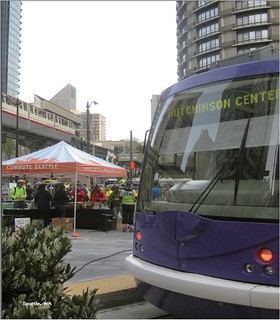 In Memphis, HUD assisted The Aerotropolis Initiative, an integrated housing, transportation and economic development strategy now attracting investment near Memphis International Airport. The Initiative, developed in concert with major regional employers including FedEx and Elvis Presley’s Graceland, is part of a broader regional logistics and infrastructure strategy expected to generate more than 3,000 new local jobs and tens of millions in private capital investment.
In Memphis, HUD assisted The Aerotropolis Initiative, an integrated housing, transportation and economic development strategy now attracting investment near Memphis International Airport. The Initiative, developed in concert with major regional employers including FedEx and Elvis Presley’s Graceland, is part of a broader regional logistics and infrastructure strategy expected to generate more than 3,000 new local jobs and tens of millions in private capital investment.
While the report is replete with descriptions of important initiatives in major US cities, the Ranson example illustrates that it’s not just large metro regions that benefit. Indeed, the document also cites examples from a range of smaller communities such as New River Valley, Virginia; Traverse City, Michigan; and Thunder Valley, South Dakota (focusing on Oglala and Sioux tribal lands).
The full report, which can be accessed here (pdf download), also describes some important program initiatives that assist communities beyond what the grants can do, including the agency’s Sustainable Communities Learning Network, Sustainable Communities Resource Center, and Housing and Transportation Affordability Initiative.
Watch and listen to Gulfport, Mississippi’s Reilly Morse describe how his community has been helped by the program, in this one-minute sound bite:
Related posts:
- EPA honors seven outstanding community sustainability projects (November 28, 2012)
- HUD launches Sustainable Communities Resource Center (February 16, 2012)
- New HUD grants will help communities pursue sustainability (November 22, 2011)
- The importance of regional planning that matters (August 12, 2011)
- EPA announces "building blocks" for sustainability planning (February 4, 2011)
- A very impressive two weeks for the federal sustainability partnership (October 22, 2010)
- HUD to use LEED-ND criteria in judging federal grant competitions (May 21, 2010)
- It's official: HUD's exciting new sustainability program (February 5, 2010)
Move your cursor over the images for credit information.
Please also visit NRDC’s sustainable communities video channels.
